Knowing how to make a snare can be very helpful in an emergency situation. Imagine that you are stranded in the woods and need to find food quickly. If you have some snare wire in your backpack or emergency kit, you can easily catch some dinner.
Follow these instructions to learn how to create a snare in order to catch some food!
Location
The first thing you’ll need to determine is where the prey is located. It’s not going to do you any good to set a trap where no animal will be.
You’ll want to look for signs of animals like tracks, droppings, plants that have been eaten, flattened vegetation, etc. The best area is probably around feeding areas or watering holes.
Noose and Loop
The simple snare is the basic tie behind any trap. Ideally, the animal would walk straight through the loop and set off the trap. You can start creating a simple snare by following these instructions:
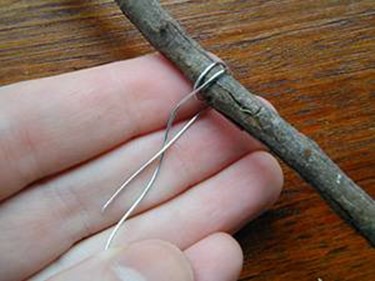 |
Wrap the end of the wire a few times around a stick. |
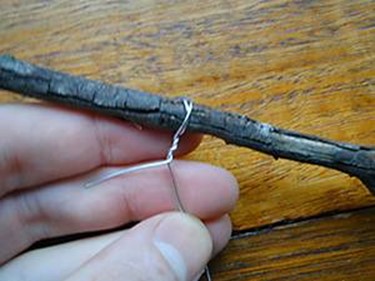 |
Twist the ends of the wire together and over each other a few times. |
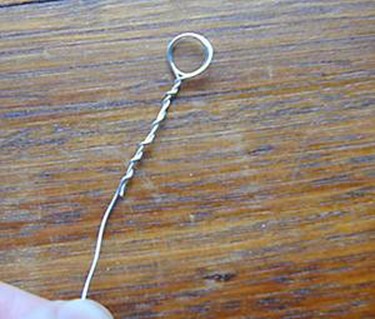 |
Remove the stick and you should have a nice loop. |
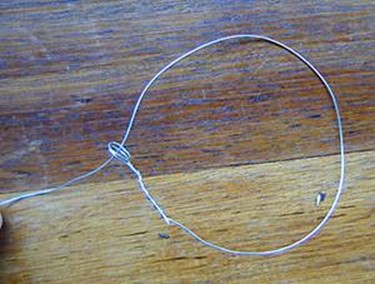 |
Thread the other end of the wire through the loop. You should be able to tighten the snare by pulling on one end. |
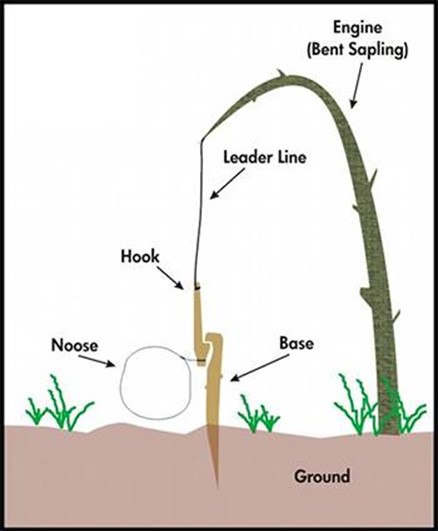
Engine
You’ll want to set up your snare near some type of tree or shrub. A young tree is always a good engine because it’s bendable and quick to snap back into place.
You’ll be bending the sapling over and tying it down to the snare in order to act as tension. If you find yourself in an area void of trees or shrubs, you can always use dead weights like rocks.
Trigger
The trigger consists of two parts: The hook and the leading line. The leading line connects the trigger to the engine – usually a wire of some sort.
The trigger is connected to the noose and should tighten very quickly when pulled by the engine.
You can build an effective trigger by finding two pieces of wood and carving interlocking notches into the sides of each. The base of the trigger should be sturdy and stay in the ground. The hook in the trigger should be able to slip out at the slightest touch, so that if an animal passes through the noose, the trigger will slip out and tighten up by being pulled with the engine.
You can also modify the trigger to connect directly to a fishing line. When the fish pulls on the bait, the trigger will release and the engine will tug on the fish – hooking it in. However, you have to be careful not to have an engine that pulls too hard and rips right out of the fish’s mouth.
Here are a few different options when building a trigger:
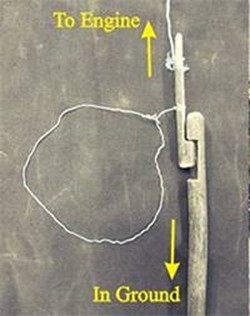 |
Carved Trigger. This trigger is very effective but requires a knife or some type of carving utensil. |
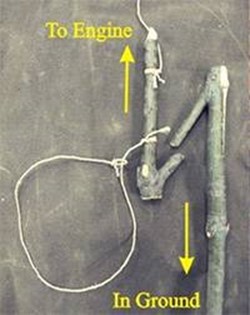 |
Y Trigger. This trigger is great when you’re stuck without a knife or carving tool. You can simply find two sticks and roughen the two edges. |
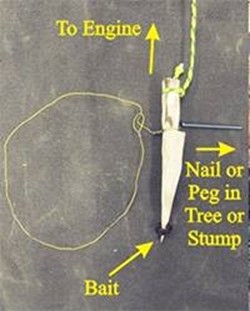 |
Peg Style Trigger. Rather than having a base that sticks into the ground, you can stick a peg into a nearby log, tree or stump. This also allows you to apply bait to the peg. |
Some other things to consider:
Remember … your human scent will be all over the wire and any trigger you may incorporate in your snare. Hold all parts of your snare in the smoke of a fire. And, before “smoking the parts” be sure to rub in dirt/mud and take off the “shine.”
A word of warning though. While rabbits would be a seemingly obvious target for capture with a snare a diet of rabbit meat alone will kill you. Seriously, it will, unless you can introduce fat into the diet as well as vegetation. It is a condition known as rabbit starvation where the hopeful survivor starts with diarrhea that dehydrates the body. A continued diet of rabbit and water will hasten the death. Food for thought. Lesson learned? Fat is an essential part of a survival diet.
Another great place to buy gear and for free manuals and videos on using snares is snareshop.com as well some great videos on youtube such as this:
Thanks to Willow Haven Outdoor for many of these ideas.
Start now to make sure you are staying prepared.
Via: thereadystore




 Follow
Follow
Leave a Reply